Related Research Articles

A space telescope or space observatory is a telescope located in outer space to observe distant planets, galaxies and other astronomical objects. Space telescopes avoid the filtering of ultraviolet frequencies, X-rays and gamma rays; the distortion (scintillation) of electromagnetic radiation; as well as light pollution which ground-based observatories encounter.

The Hubble Space Telescope is a space telescope that was launched into low Earth orbit in 1990 and remains in operation. It was not the first space telescope, but it is one of the largest and most versatile, renowned both as a vital research tool and as a public relations boon for astronomy. The Hubble telescope is named after astronomer Edwin Hubble and is one of NASA's Great Observatories, along with the Compton Gamma Ray Observatory (1991–2000), the Chandra X-ray Observatory, and the Spitzer Space Telescope (2003–2020). At the time of its launch in 1990, the Hubble Space Telescope cost $4.7 billion.

The Space Telescope Science Institute (STScI) is the science operations center for the Hubble Space Telescope (HST) and for the James Webb Space Telescope (JWST). STScI is located on the Johns Hopkins University Homewood Campus in Baltimore, Maryland and was established in 1981 as a community-based science center that is operated for NASA by the Association of Universities for Research in Astronomy (AURA). In addition to performing continuing science operations of HST and preparing for scientific exploration with JWST, STScI manages and operates the Mikulski Archive for Space Telescopes (MAST), the Data Management Center for the Kepler mission and a number of other activities benefiting from its expertise in and infrastructure for supporting the operations of space-based astronomical observatories. Most of the funding for STScI activities comes from contracts with NASA's Goddard Space Flight Center but there are smaller activities funded by NASA's Ames Research Center, NASA's Jet Propulsion Laboratory, and the European Space Agency (ESA). The staff at STScI consists of scientists, spacecraft engineers, software engineers, data management personnel, education and public outreach experts, and administrative and business support personnel. There are approximately 100 Ph.D. scientists working at STScI, 15 of which are ESA staff who are on assignment to the HST project. The total STScI staff consists of about 700 people as of 2017.

The James Webb Space Telescope is a joint NASA–ESA–CSA space telescope that is planned to succeed the Hubble Space Telescope as NASA's flagship astrophysics mission. The JWST will provide improved infrared resolution and sensitivity over Hubble, and will enable a broad range of investigations across the fields of astronomy and cosmology, including observing some of the most distant events and objects in the universe, such as the formation of the first galaxies.
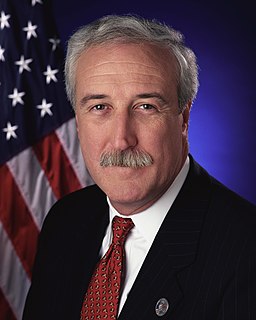
Sean Charles O'Keefe is a university professor at Syracuse University Maxwell School, former chairman of Airbus Group, Inc., former Secretary of the Navy, former Administrator of NASA, and former chancellor of Louisiana State University (LSU). He is a former member of the board of directors of DuPont.
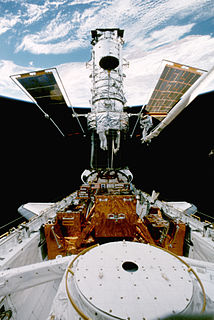
STS-82 was the 22nd flight of the Space Shuttle Discovery and the 82nd mission of the Space Shuttle program. It was NASA's second mission to service the Hubble Space Telescope, during which Discovery's crew repaired and upgraded the telescope's scientific instruments, increasing its research capabilities and achieved the highest altitude ever attained by a STS Orbiter. Discovery launched from Kennedy Space Center, Florida, on 11 February 1997, returning to Earth on 21 February 1997 at Kennedy Space Center.
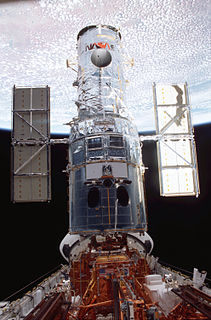
STS-109 (SM3B) was a Space Shuttle mission that launched from the Kennedy Space Center on 1 March 2002. It was the 108th mission of the Space Shuttle program, the 27th flight of the orbiter Columbia and the fourth servicing of the Hubble Space Telescope. It was also the last successful mission of the orbiter Columbia before the ill-fated STS-107 mission, which culminated in the Columbia disaster.

John Mace Grunsfeld is an American physicist and a former NASA astronaut. He is a veteran of five Space Shuttle flights and has served as NASA Chief Scientist. His academic background includes research in high energy astrophysics, cosmic ray physics and the emerging field of exoplanet studies with specific interest in future astronomical instrumentation. After retiring from NASA in 2009, he served as the Deputy Director of the Space Telescope Science Institute in Baltimore, Maryland. In January 2012, he returned to NASA and served as associate administrator of NASA's Science Mission Directorate (SMD). Grunsfeld announced his retirement from NASA in April 2016.

NASA's series of Great Observatories satellites are four large, powerful space-based astronomical telescopes launched between 1990 and 2003. They were built with different technology to examine specific wavelength/energy regions of the electromagnetic spectrum: gamma rays, X-rays, visible and ultraviolet light, and infrared light.
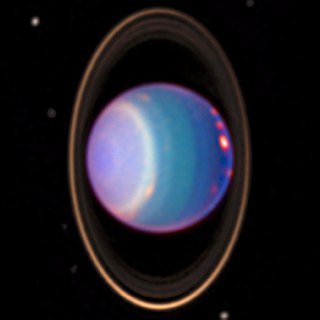
The Near Infrared Camera and Multi-Object Spectrometer (NICMOS) is a scientific instrument for infrared astronomy, installed on the Hubble Space Telescope (HST), operating from 1997 to 1999, and from 2002 to 2008. Images produced by NICMOS contain data from the near-infrared part of the light spectrum.
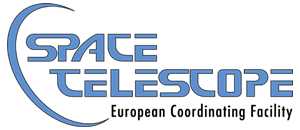
The Space Telescope – European Coordinating Facility (ST-ECF) was an institution which provided a number of support and service functions primarily for European observers of the NASA/ESA Hubble Space Telescope (HST). It was established in 1984 by the European Space Agency (ESA) and the European Southern Observatory (ESO), and was located at the ESO headquarters in Garching bei München, Germany. The ST-ECF ceased operations on 31 December 2010.

STS-125, or HST-SM4, was the fifth and final Space Shuttle mission to the Hubble Space Telescope (HST) and the last solo flight of the Space Shuttle Atlantis. The launch of the Space Shuttle Atlantis occurred on 11 May 2009 at 2:01 pm EDT. Landing occurred on 24 May at 11:39 am EDT, with the mission lasting a total of just under 13 days.

Neptune has been directly explored by only one space probe, Voyager 2, in 1989. As of June 2021, there are no approved future missions to visit the Neptunian system. NASA, ESA, and independent academic groups have proposed future scientific missions to visit Neptune. Some mission plans are still active, while others have been abandoned or put on hold.
Hubble Live, fully titled Hubble Live: The Final Mission, was a one-hour live American television special presentation that premiered on May 11, 2009 on the Science Channel. The program covered the launch of Space Shuttle Atlantis on NASA's Servicing Mission 4 (HST-SM4), the eleven-day fifth and final mission to repair the Hubble Space Telescope. The program was hosted by Josh Zepps, who is the host of science news series Brink, and featured interviews with NASA astrophysicist and space telescope expert Kim Weaver and former NASA astronaut Paul William Richards.

Rodger Evans Doxsey was an American physicist and astronomer who made major contributions to the scientific and operational success of NASA's Hubble Space Telescope (HST). He joined the HST Project at the Space Telescope Science Institute (STScI), in Baltimore, Maryland, in 1981, and was head of the Hubble Missions Office at his death.

Space research is scientific study carried out in outer space, and by studying outer space. From the use of space technology to the observable universe, space research is a wide research field. Earth science, materials science, biology, medicine, and physics all apply to the space research environment. The term includes scientific payloads at any altitude from deep space to low Earth orbit, extended to include sounding rocket research in the upper atmosphere, and high-altitude balloons.

The Nancy Grace Roman Space Telescope is a NASA infrared space telescope currently under development. Roman was recommended in 2010 by the United States National Research Council Decadal Survey committee as the top priority for the next decade of astronomy. On February 17, 2016, WFIRST was approved for development and launch.
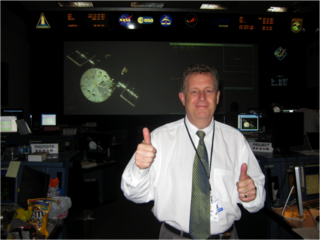
Charles Mattias ("Matt") Mountain is currently the President of the Association of Universities for Research in Astronomy which designs, builds, and operates telescopes and observatories for the National Science Foundation (NSF) and the National Aeronautics and Space Administration (NASA). AURA's NASA center is the Space Telescope Science Institute (STScI), responsible for the science mission for the Hubble Space Telescope, the science and operations for the James Webb Space Telescope, and the MAST data archive. AURA's NSF centers are Gemini Observatory, the National Optical Astronomy Observatory (NOAO), and the National Solar Observatory (NSO). Dr. Mountain and AURA are also responsible for the NSF construction projects: the Daniel K. Inouye Solar Telescope (DKIST) on Haleakalā, Hawaii and the Large Synoptic Survey Telescope (LSST) on Cerro Pachón in Chile.
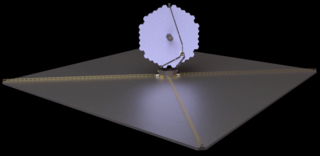
The Large Ultraviolet Optical Infrared Surveyor, commonly known as LUVOIR, is a multi-wavelength space telescope concept being developed by NASA under the leadership of a Science and Technology Definition Team. It is one of four large astrophysics space mission concepts being studied in preparation for the National Academy of Sciences 2020 Astronomy and Astrophysics Decadal Survey. While LUVOIR is a concept for a general-purpose observatory, it has the key science goal of characterizing a wide range of exoplanets, including those that might be habitable. An additional goal is to enable a broad range of astrophysics, from the reionization epoch, through galaxy formation and evolution, to star and planet formation. Powerful imaging and spectroscopy observations of Solar System bodies would also be possible. LUVOIR would be a Large Strategic Science Mission and will be considered for a development start sometime after 2020. The LUVOIR Study Team has produced designs for two variants of LUVOIR: one with a 15.1 m diameter telescope mirror (LUVOIR-A) and one with an 8 m diameter mirror (LUVOIR-B). LUVOIR can observe ultraviolet, visible, and near-infrared wavelengths of light. The Final Report on the 5-year LUVOIR mission concept study was publicly released on 26 August 2019.

Fine Guidance Sensor (FGS) for the Hubble Space Telescope is a system of three instruments used for pointing the telescope in space, and also for astrometry and its related sciences. Each FGS uses a combination of optics and electronics to provide for pointing the telescope at a certain location in the sky. There are three Hubble FGS, and they have been upgraded over the lifetime of the telescope by manned Space Shuttle missions. The instruments can support pointing of 2 milli-arc seconds. The three FGS are part of the Hubble Space Telescope's Pointing Control System, aka PCS. The FGS function in combination with the Hubble main computer and gyroscopes, with the FGS providing data to the computer as sensors which enables the HST to track astronomical targets.
References
- ↑ "Hubble Option" (Press release). Johns Hopkins University Applied Physics Laboratory. 2005. Archived from the original on 2005-03-06. Retrieved 30 June 2013.
- ↑ Lawler, A. (2005). "ASTRONOMY: Hearing Highlights Dispute over Hubble's Future". Science. 307 (5711): 831. doi:10.1126/science.307.5711.831. PMID 15705817. S2CID 152395132.
- ↑ Harwood, William (31 October 2006). "'Go' for Hubble servicing mission". CBS NEWS Space Place. Retrieved 1 July 2013.

